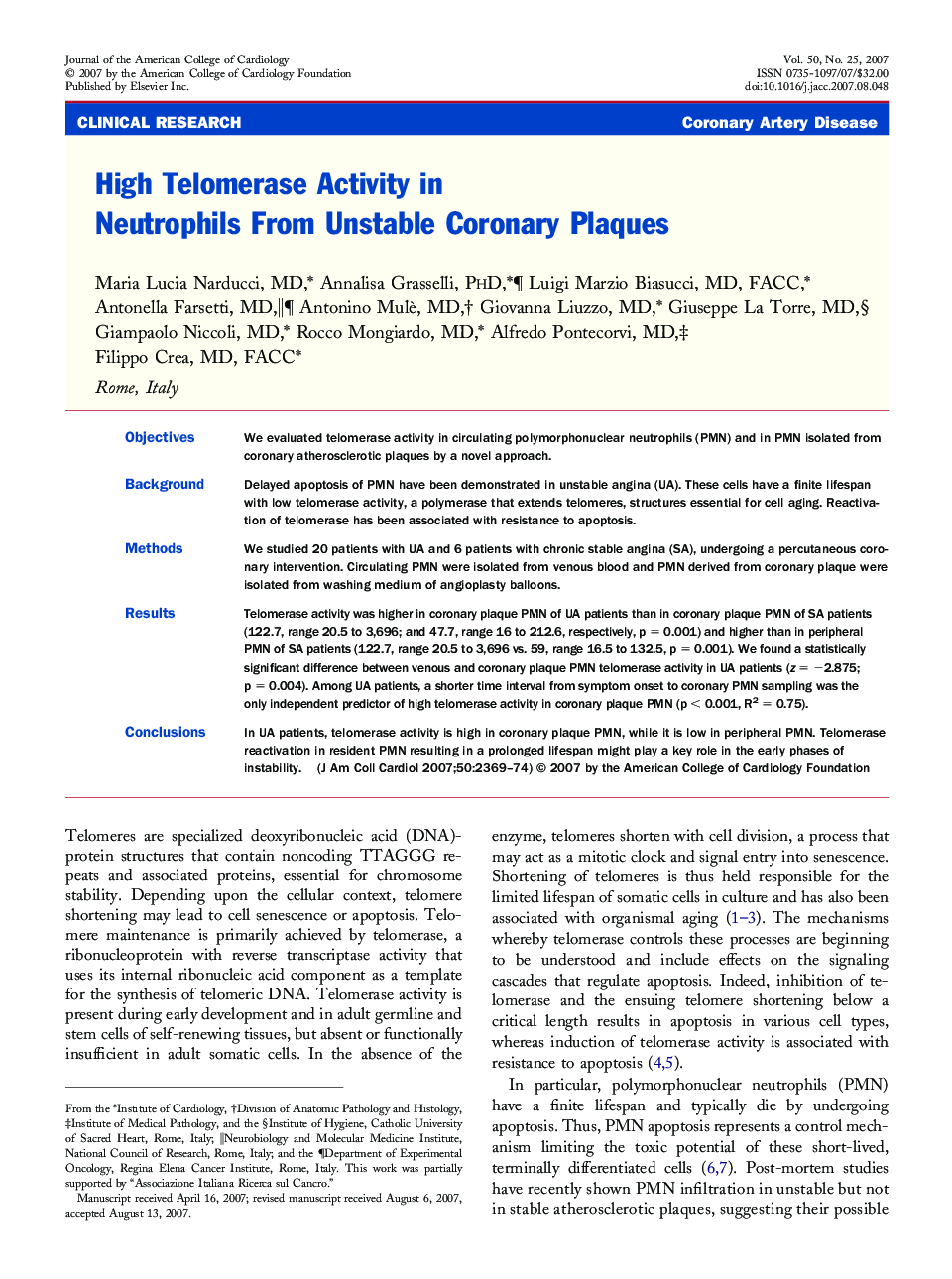| Article ID | Journal | Published Year | Pages | File Type |
|---|---|---|---|---|
| 2952755 | Journal of the American College of Cardiology | 2007 | 6 Pages |
ObjectivesWe evaluated telomerase activity in circulating polymorphonuclear neutrophils (PMN) and in PMN isolated from coronary atherosclerotic plaques by a novel approach.BackgroundDelayed apoptosis of PMN have been demonstrated in unstable angina (UA). These cells have a finite lifespan with low telomerase activity, a polymerase that extends telomeres, structures essential for cell aging. Reactivation of telomerase has been associated with resistance to apoptosis.MethodsWe studied 20 patients with UA and 6 patients with chronic stable angina (SA), undergoing a percutaneous coronary intervention. Circulating PMN were isolated from venous blood and PMN derived from coronary plaque were isolated from washing medium of angioplasty balloons.ResultsTelomerase activity was higher in coronary plaque PMN of UA patients than in coronary plaque PMN of SA patients (122.7, range 20.5 to 3,696; and 47.7, range 16 to 212.6, respectively, p = 0.001) and higher than in peripheral PMN of SA patients (122.7, range 20.5 to 3,696 vs. 59, range 16.5 to 132.5, p = 0.001). We found a statistically significant difference between venous and coronary plaque PMN telomerase activity in UA patients (z= −2.875; p = 0.004). Among UA patients, a shorter time interval from symptom onset to coronary PMN sampling was the only independent predictor of high telomerase activity in coronary plaque PMN (p < 0.001, R2= 0.75).ConclusionsIn UA patients, telomerase activity is high in coronary plaque PMN, while it is low in peripheral PMN. Telomerase reactivation in resident PMN resulting in a prolonged lifespan might play a key role in the early phases of instability.
